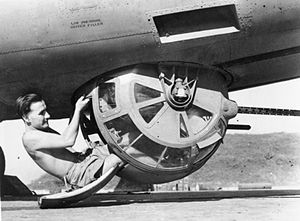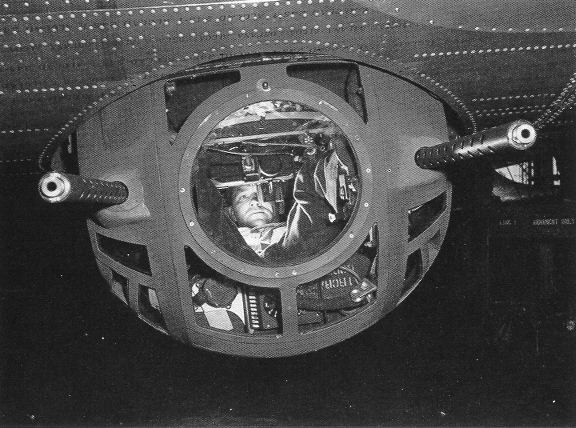In order to help make sense of this poem, I thought it might be helpful to know a little more about the author and see what a ball turret gunner actually looks like.
I found some interesting commentary on the author Randall Jarrell on an academic site called "Modern American Poetry."
David Perkins writes: "… During the war [Jarrell] served in the air force, though not as a pilot. By 1942 he had published two collections of poetry. The preface to the first (1940) confessed his wish and failure to replace Modernism with something else. At the air base he listened to the stories of the pilots and read newspaper war reports and out of these materials he composed, in Little Friend, Little Friend (1945) and Losses (1948), what remain for many readers the finest "war" poems of our time. They are vivid and moving incidents of combat, told with an exceptionally sensitive psychological insight and moral perplexity. And the emotions of Jarrell’s pilots were in some ways unfamiliar in the literature of modern war. He expresses the pity and protest typical of the better poets of the First World War, the shock, horror, weary resignation and sense of doom common in war poetry, but also a nexus of other feelings; they do not belong just to Jarrell (or to[W. H. ] Auden, whose perceptions helped form Jarrell’s in these poems), or just to the Second World War, but persist to the present moment. The planes have more reality, more identity than their crews ("A Front"). Enclosed in machines in remote sky, the pilots are psychologically detached from the deaths they distribute and fall toward. They are murderers who are likely themselves to be murdered, yet also passive, helpless, and innocent ("Eighth Air Force"). In short, in his pilots Jarrell expressed the feelings of alienation, helplessness, regression, irresponsibility, and vulnerability that our vastly unmanageable, bureaucratic, technological civilization seems to create."
From "Breaking Through the New Criticism" (Chapter 16) in A History of Modern Poetry: Modernism and After (Cambridge: Harvard U P, 1987), 393.
Also, here are some pictures showing what a ball turret looks like:
In this picture, it is easy to see why Jarrell uses the term "fetus" in his note and where the womb and birth imagery come from in the poem.
Do you think Jarrell did a good job of capturing in words the experience shown in these pictures? Is this one of the "finest war poems of all times"?



No comments:
Post a Comment